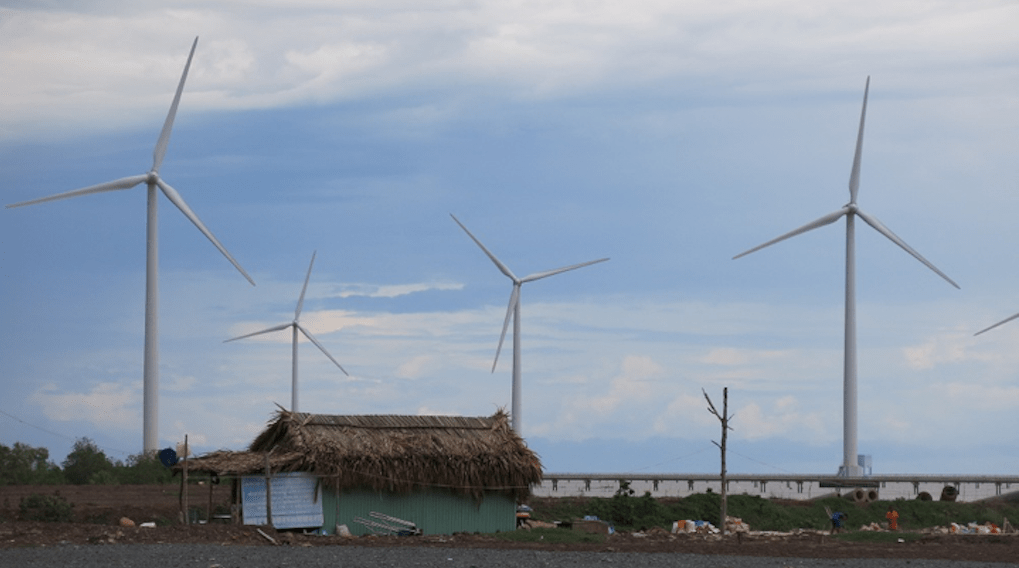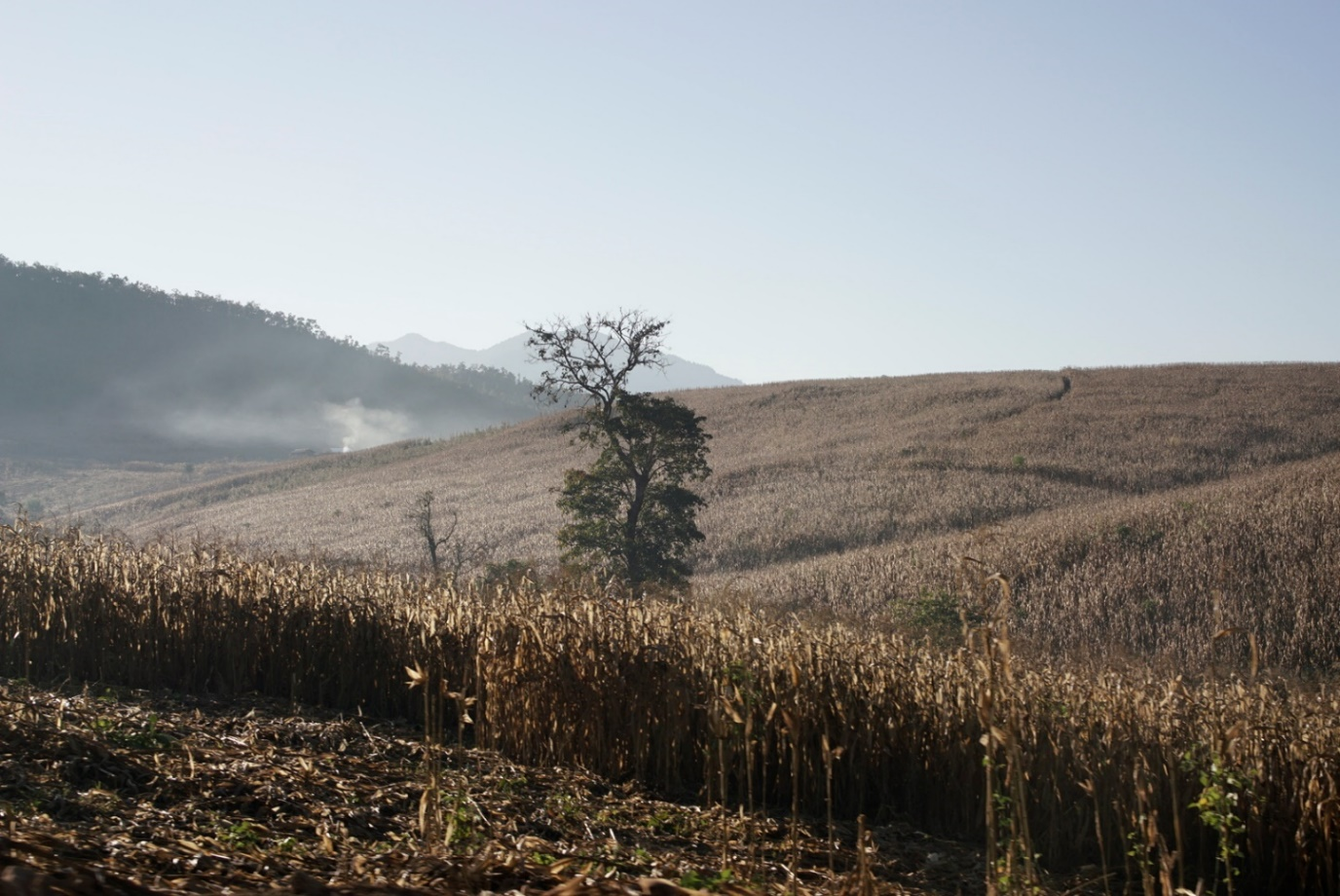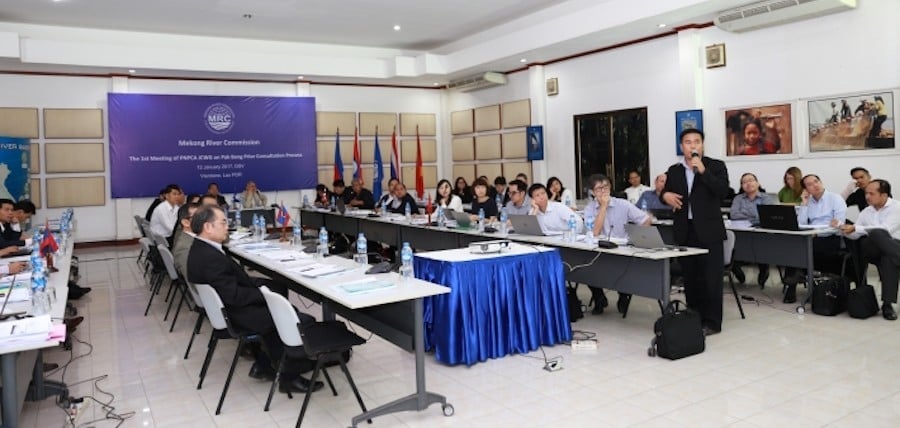During the 2016 United Nations Framework Convention on Climate Change in Marrakech (COP 22) Vietnam and Cambodia professed their commitment to do their part to reduce CO2 emissions. Noting that they are both on the front lines globally in facing impacts from a warming atmosphere, the two neighbors agreed to transition their entire electricity generating portfolios to renewables.
From the international commitment to domestic policy
Upon his return home, Vietnam’s Minister of Nature Resources and Environment (MONRE) Tran Hong Ha offered a slightly different spin. Before a group of European diplomats advocating Vietnam’s fossil-fuel subsidy reform, the minister stressed that his country is actually working to just balance renewable energy generation with those produced with fossil fuels.
“Vietnam’s energy demand will continue to rise sharply though 2030,” he said. “To achieve balance in energy sources, the state has taken several valuable steps: implementing two wind power plants and one solar farm; education and training to develop human capital in the nuclear power sector; policies to support renewable energy investment…”
In an interview shortly thereafter, the chairman of the Vietnam Electricity (EVN) Duong Quang Thanh added that EVN will focus on increasing the share of solar energy in satisfying the country’s energy demand from 2018-2029.
Vietnamese Prime Minister went on to sign two important regulations – Decision No. 2068/QD-TTg to approve the development strategy of renewable energy in 2030-2050 and Decision No. 428/QD-TTg to approve the Revised National Power Development Master Plan for the 2011-2020 (known in short as the Revised Master Plan VII).
Cambodia, Vietnam’s upstream Mekong neighbor, has too laid out an ambitious future for renewable energy. “Now is a particularly good time for Cambodia to embrace a target and learn to incorporate advanced technologies into its power generation mix,” says Kheiv Mot, Secretary of State for the Ministry of Environment in January. “These technologies and changes will likely arrive sooner than people realize, so let’s start a step by step journey to incorporate diverse technologies in the power supply mix.”
Some of the steps previously taken include: Cambodia’s Minister of Environment, Say Sam Al signed an agreement making Cambodia a member of International Solar Alliance; affirming in its The Rectangular Strategy for Growth that Cambodia should be “further expanding the capacity of low-cost and hi-tech electricity production, especially from new and clean energy sources”; and its National Strategic Development Plan 2014 – 2018 stating that the government has “transferred Rural Electrification Funds be led by Electricite Du Cambodge (EDC) to promote equity in access to electricity supply services and encourage the private sector to participate in investing in sustainable, rural power supply services, particularly, encouraging the use of new technologies and renewable energy”.
A long way to go from the policy to the reality
In spite of heavily promoting renewable energy recently, Vietnam and Cambodia’s share of renewables in power generation is less than 1%. Their power generation still relies heavily on large hydro and coal, and this trend is forecasted to continue through 2030.
According to Vietnam’s Revised Master Plan VII, by 2030 the shares of electricity produced from large hydro and coal are slated to exceed that produce by renewables. In fact total renewables, excluding large and medium scale hydropower, are project to deliver just seven per cent of energy supplies in 2020 and a little over 10 per cent in 2030.
Indeed, the government continues to heavily prioritize hydropower development, especially as multi-purpose projects that include flood control water supply components, generating 29.5 per cent of electricity supplies in 2020 and 15.5 per cent in 2030.
Vietnam’s coal and thermal components too are slated to remain major components of the country’s energy generating portfolio, providing almost 50 per cent of electricity produced in 2020 and about 53 per cent in 2030. Some of this will come from major plants fed by coal imported from abroad: Duyên Hải, Long Phú, Sông Hậu and Long An.
In closing out a conference last November titled “The technology of coal-fired thermal power and environment,” Vietnam’s Vice Minister of Industry and Trade (MOIT), Hoang Quoc Vuong, urged delegates to advance coal-fired thermal power plants as a cornerstone to Vietnam’s energy future due to coal’s low production price and the availability of imported coal. Other energy sources, he surmised, such as renewables, thermal and gas could not replace coal.
Vietnam’s ongoing dependence on coal does not sit well with Margareth Sembiring, a senior analyst at the Centre for Non-Traditional Security Studies, S. Rajaratnam School of International Studies (Singapore). “It sends a contradictory message,” said Margareth in the East Asia Forum. She notes that while some electricity is being produced from renewable energy, coal and its high carbon content continue to be used, in contrast to the sprit of statements made in Marrakech.
Cambodia too relies heavily on hydropower and coal. The Electricite Du Cambodge, the state electricity generating authority, reported in 2015 that hydropower provided 48 per cent of the country’s energy supply and coal 47 per cent. Toch Savanna, Director of Department of Energy Technique, Ministry of Mines and Energy, argues that Cambodia’s first priority is to provide power with a reasonable price to consumers regardless of the impacts associated with how that electricity is produced.
In the interview with the Phnom Penh Post, Mey Kalyan, a senior adviser to the Supreme National Economic Council, noted that the need was, “not only to focus on energy availability, but also on affordability”.
“Coal is a traditional approach to address energy needs within the Cambodian context; it can provide energy relatively quickly,” he added. “However, we also need more renewable energy, but it needs to be done gradually because shifting to only renewables right now is not a realistic path to meet the country’s energy demand.”
Renewable Energy can benefit from the famine touch
The renewable sectors in both Vietnam and Cambodia are dominated by male decision makers and investors. For example, in Vietnam, the main brokers are the Minister of MONRE, Tran Hong Ha; Minister of MOIT, Tran Tuan Anh, and its Chairman Duong Quang Thanh; and the Chairman of Congly Company – the developer of Bac Lieu wind power plant.
In Cambodia, renewable policy is guided by the Minister of the Ministry of Mines and Energy, Suy Sem; the Minister of Environment Say, Samal, and the Chairman of EDC, Tun Lean.
Internationally, it’s increasing being argued that that renewable energy could have a better future with women holding the reigns. Women in the top positions can accelerate renewable energy development as women by nature tend to think in longer and more sustainable terms.
Dr. Gail Reitenbach, the editor of The Power, argues that women are essential to a thriving power generation sector. Their presence in the top positions can make this industry more successful.
Quoting Christine Lagarde, the first woman to head the International Monetary Fund (IMF) Reitenbach asserted that “women have different ways of taking risks, of addressing issues… of ruminating a bit more before they jump to conclusions.”
The Guardian, states that lack of women at the top is damaging the energy sector because this industry is ‘missing 50 per cent of the talent’ at it struggle to solve UK’s own energy challenges.
And Sophie Vorrath, the Deputy Editor of RenewEconomy says that a lack of gender diversity may hold back Australia’s energy revolution. She calls for putting more women in renewables’ leadership if the sector is going to thrive.
Building from the Outside In
Almost all major renewable energy projects in Cambodia and Vietnam are owned by foreign investors. For instance, Bac Lieu’s 99 MW wind power plant was financed by US’s Ex-Im Bank. The 24 MW Phu Lac wind power plant received a 35-million-euro loan from Germany’s KfW. General Electric recently announced a US$1.5 billion cooperation with Ireland’s Mainstream Renewable Power, to develop large-scale wind power totaling 1,000 MW in Vietnam.
The Economic Research Institute for ASEAN and East Asia (ERIA) reports that Cambodia’s solar market is driven mainly by international donors. With the assistance of the World Bank, the Bulk Purchase, and the solar home system installation project installed 30W and 50W solar systems for 12,000 households in rural areas. Other solar powered projects have been carried out by the Japanese
International Cooperation Agency (JICA), the Korean International Cooperation Agency (KOICA), the United Nations Industrial Development Organization (UNIDO), the Agence Française de Développement (AFD), and NGOs.
Foreign donors have played a very important role to develop the renewables’ market. First, they provide renewable energy data, evidence and scenarios. Second, they fund pilot projects which have made renewable energy a reality. When these projects are successful, they represent case studies that can drive policies for more aggressive implementation of renewable energy. In time, it is hoped that Vietnam and Cambodia’s domestic capacity in renewables can evolve and eclipse that now provided from abroad.
This story was produced as part of a five-part series in collaboration with The Mekong Eye and Mekong Matters Journalism Network. The journalist and their outlet retain full editorial and copyright control.
Photo: Bac Lieu wind power plant is both clean, and generates livelihoods for local people. Credit: Tran Thuy Binh





